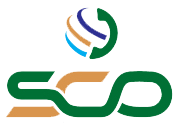
Telefonaktiebolaget LM Ericsson, commonly known as Ericsson, is a Swedish multinational networking and telecommunications company headquartered in Stockholm. The company sells infrastructure, software, and services in information and communications technology for telecommunications service providers and enterprises, including, among others, 3G, 4G, and 5G equipment, and Internet Protocol (IP) and optical transport systems. The company employs around 100,000 people and operates in more than 180 countries. Ericsson has over 57,000 granted patents.

The Nippon Telegraph and Telephone Corporation (NTT) is a Japanese telecommunications holding company headquartered in Tokyo, Japan. Ranked 55th in Fortune Global 500, NTT is the fourth largest telecommunications company in the world in terms of revenue, as well as the third largest publicly traded company in Japan after Toyota and Sony, as of June 2022. In 2023, the company was ranked 56th in the Forbes Global 2000.

Near-field communication (NFC) is a set of communication protocols that enables communication between two electronic devices over a distance of 4 centimetres (1.6 in) or less. NFC offers a low-speed connection through a simple setup that can be used for the bootstrapping of capable wireless connections. Like other proximity card technologies, NFC is based on inductive coupling between two electromagnetic coils present on a NFC-enabled device such as a smartphone. NFC communicating in one or both directions uses a frequency of 13.56 MHz in the globally available unlicensed radio frequency ISM band, compliant with the ISO/IEC 18000-3 air interface standard at data rates ranging from 106 to 848 kbit/s.

Freedom of Mobile Multimedia Access (FOMA) is the brand name of the W-CDMA-based 3G telecommunications services being offered by the Japanese telecommunications service provider NTT DoCoMo. It is an implementation of the Universal Mobile Telecommunications System (UMTS) and was the world's first 3G mobile data service to commence commercial operations.
4G is the fourth generation of broadband cellular network technology, succeeding 3G and preceding 5G. A 4G system must provide capabilities defined by ITU in IMT Advanced. Potential and current applications include amended mobile web access, IP telephony, gaming services, high-definition mobile TV, video conferencing, and 3D television.
The next-generation network (NGN) is a body of key architectural changes in telecommunication core and access networks. The general idea behind the NGN is that one network transports all information and services by encapsulating these into IP packets, similar to those used on the Internet. NGNs are commonly built around the Internet Protocol, and therefore the term all IP is also sometimes used to describe the transformation of formerly telephone-centric networks toward NGN.
The Personal Handy-phone System (PHS), also marketed as the Personal Communication Telephone (PCT) in Thailand, and the Personal Access System (PAS) and commercially branded as Xiaolingtong in Mainland China, was a mobile network system operating in the 1880–1930 MHz frequency band, used mainly in Japan, China, Taiwan, and some other Asian countries and regions.

Sri Lanka Telecom PLC, doing business as SLT-MOBITEL, is the national telecommunications services provider in Sri Lanka and one of the country's largest companies with an annual turnover in excess of Rs 40 billion. The company provides domestic and corporate services which include fixed and wireless telephony, Internet access and IT services to domestic, public and business sector customers. As of 2018 SLT-MOBITEL was Sri Lanka's second largest mobile network operator with over 7.9 million subscribers.
A photonic integrated circuit (PIC) or integrated optical circuit is a microchip containing two or more photonic components that form a functioning circuit. This technology detects, generates, transports, and processes light. Photonic integrated circuits utilize photons as opposed to electrons that are utilized by electronic integrated circuits. The major difference between the two is that a photonic integrated circuit provides functions for information signals imposed on optical wavelengths typically in the visible spectrum or near infrared (850–1650 nm).

Silicon photonics is the study and application of photonic systems which use silicon as an optical medium. The silicon is usually patterned with sub-micrometre precision, into microphotonic components. These operate in the infrared, most commonly at the 1.55 micrometre wavelength used by most fiber optic telecommunication systems. The silicon typically lies on top of a layer of silica in what is known as silicon on insulator (SOI).

Fiber-optic communication is a method of transmitting information from one place to another by sending pulses of infrared or visible light through an optical fiber. The light is a form of carrier wave that is modulated to carry information. Fiber is preferred over electrical cabling when high bandwidth, long distance, or immunity to electromagnetic interference is required. This type of communication can transmit voice, video, and telemetry through local area networks or across long distances.

Sterlite Technologies Limited is an Indian optical and digital technology company, headquartered in Pune. It is listed on Bombay Stock Exchange and National Stock Exchange of India. It has 636 patents and is active in over 150 countries. The company is specialized in optical networking which consists of optical fiber and cables, hyper-scale network design, and deployment and network software.
Network equipment providers (NEPs) – sometimes called telecommunications equipment manufacturers (TEMs) – sell products and services to communication service providers such as fixed or mobile operators as well as to enterprise customers. NEP technology allows for calls on mobile phones, Internet surfing, joining a conference calls, or watching video on demand through IPTV (internet protocol TV). The history of the NEPs goes back to the mid-19th century when the first telegraph networks were set up. Some of these players still exist today.
Gigabit Home Networking (G.hn) is a specification for wired home networking that supports speeds up to 2 Gbit/s and operates over four types of legacy wires: telephone wiring, coaxial cables, power lines and plastic optical fiber. Some benefits of a multi-wire standard are lower equipment development costs and lower deployment costs for service providers.
ADVA Optical Networking SE was a European telecommunications vendor that provides network equipment for data, storage, voice and video services. It was founded in 1994 by Brian Protiva. On August 30, 2021, it was announced that ADVA and Adtran Holdings would be merging, continuing business under the name Adtran.
Operations support systems (OSS), operational support systems in British usage, or Operation System (OpS) in NTT, are computer systems used by telecommunications service providers to manage their networks. They support management functions such as network inventory, service provisioning, network configuration and fault management.

The Special Communications Organization (SCO) (Urdu: تنظیم برائے مواصلاتِ مخصوصہ) is Pakistani public sector organization operated by MoIT&T. SCO plays a role in providing telecommunication services in Azad Kashmir and Gilgit Baltistan to almost 1.7 million people, a quarter of the total population.
The Telecom Infra Project (TIP) was formed in 2016 as an engineering-focused, collaborative methodology for building and deploying global telecom network infrastructure, with the goal of enabling global access for all.

The India Mobile Congress (IMC) is a digital technologies' forum in Asia consisting of a three-day international conference and a technology exhibition. The event is envisioned to be the "leading platform for India's start-up and technology ecosystem." Within the telecommunications and technology industry, IMC is claimed to be the "largest digital technology forum in Asia." The event is organised jointly by the Cellular Operators Association of India (COAI) and the Department of Telecommunications (DoT) of the Government of India. The forum aims to be a platform for industry, businesses, regulators and policymakers to discuss and deliberate on critical issues affecting the growth of the telecom and technology sector. In its first two iterations, the IMC focused on transformative 5G technology and most of the booths showcased various use-cases and scenarios where 5G would play an important role; the exhibitors included service providers, OEMs and infrastructure providers.
In telecommunications, 6G is the designation for a future technical standard of a sixth-generation technology for wireless communications.









